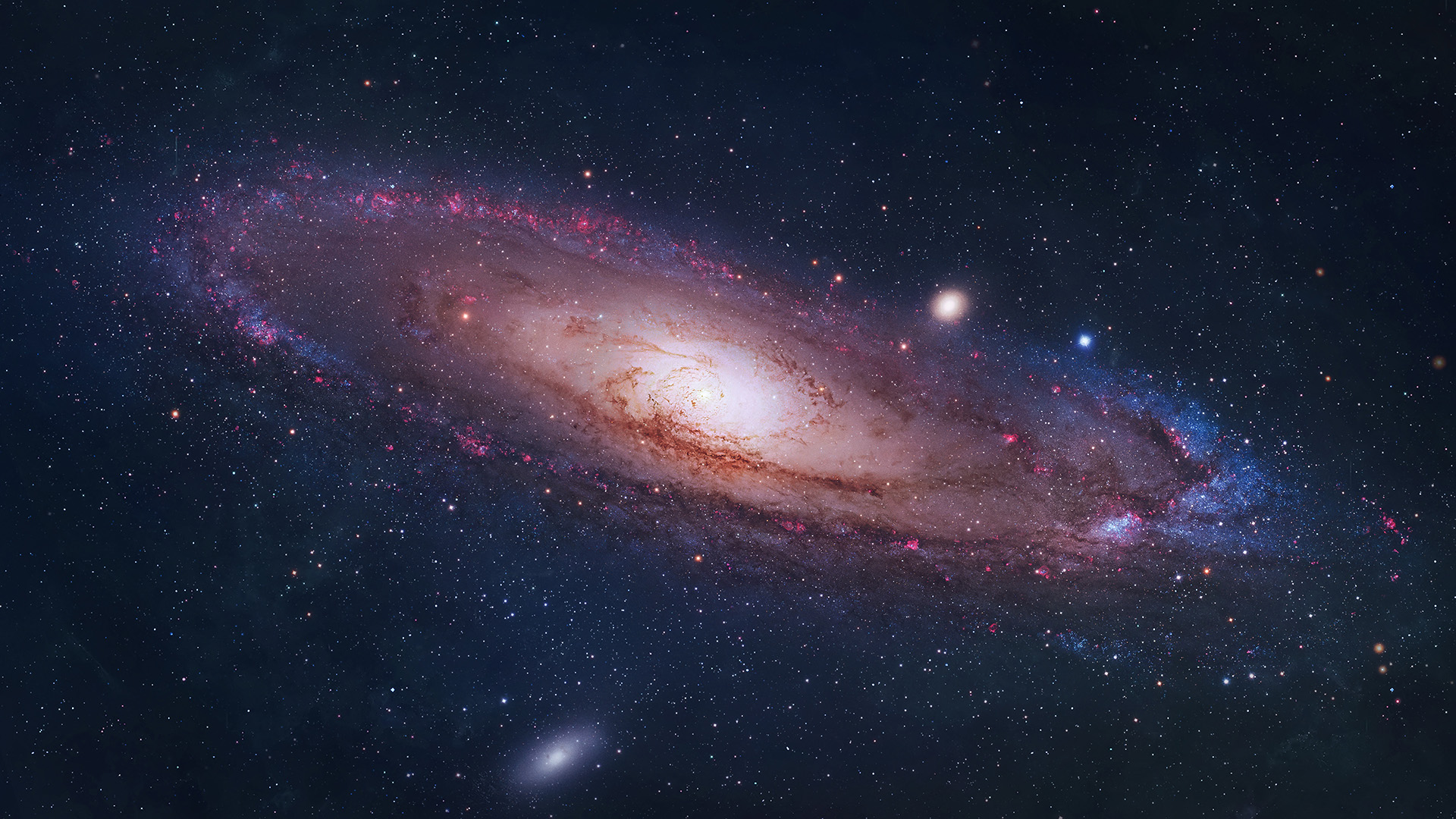Key trends in outer space investments and activities
Overview
Australia’s space industry is poised to undergo a renaissance, both reprising its role as an able assistant to other nations’ space enterprises and developing a rapidly expanding industry in its own right. Australia’s first forays into the space sector came as a “supporting player” to the United States’ Cold War era space race programs. Australia provided support and facilities that played a key role in advancing satellite launches, observation and communications throughout the 1960s and 1970s, including for the Moon landings of Apollo 11 in 1969.
In 1967, Australia became the seventh nation overall to launch a satellite into orbit, and only the third to do so from its own soil, with the launch of WRESAT from the Woomera Range Complex in South Australia. With over 50 years of space launch experience and more than 70 years in ground-breaking research in astronomy, Australia is poised to expand and further develop its capacities in both research and spaceflight.
Priority fields
Since the Australian Space Agency (ASA) was founded in 2018, the Australian Government has embarked on a number of public/private partnerships to expand domestic space industry capability, including under:
- The Moon to Mars initiative, an AU$150m investment over five years (beginning in September 2019), designed to boost the Australian space industry’s profile and presence across the globe. The third stage of the Moon to Mars initiative is the Trailblazer Program, a fund which will help support future NASA missions to have humans back on the Moon and, later, Mars;
- The Space Infrastructure Fund – This consisted of AU$19.5m of investments into seven infrastructure programs around Australia to support the growth of the space sector;
- The International Space Investment initiative – This consisted of AU$11m in grants across 10 projects (24 Australian businesses/research institutions and over 10 international space agencies, businesses or research organizations) to help develop Australia’s space industry capability; and
- The Modern Manufacturing Initiative (MMI) – this Australian Government grant initiative provided co-funding for large manufacturing projects that have broad sectoral benefits across National Manufacturing Priorities, with one of these six priorities being space. The objective is to build scale and capture income in high-value areas of manufacturing where Australia either has established competitive strength or emerging priorities. The MMI had three targeted streams:
- The Manufacturing Collaboration Stream – this stream provided funding for large, transformational projects that will either directly feature collaboration or will create and facilitate collaborative ecosystems;
- The Manufacturing Translation Stream – this stream supported projects that translate high quality research into commercial outcomes and supports businesses to scale-up and be more competitive and resilient; and
- The Manufacturing Integration Stream – this stream supported projects that integrate Australian business into domestic and international value chains.
Under the Australian Government’s Civil Space Strategy 2019-2028, there are seven official priority areas:
- Position, navigation and timing (PNT);
- Earth observation (EO) from space to advance Australia’s economy, including by improvement in agricultural monitoring, water management and the monitoring of shipping routes. Capability in EO is to be assisted through a partnership between the ASA and Geoscience Australia’s Digital Earth Australia (DEA) initiative;
- Communications technologies and services, including emerging technologies such as lasers, data communication, quantum communications and hybrid radio/optical communications;
- Space situational awareness and debris monitoring – leveraging Australia’s geographic position to track space debris and prevent collisions in space;
- Robotics and automation on Earth and in space – designed to enable Australia to leverage its experience in “remote asset management” (specifically in mining, oil, gas, transport, agriculture and fisheries) to increase accessibility and lower costs for remote operation and exploitation in space;
- Access to space – ensuring Australia is able to leverage both foreign government and commercial launches from Australian territory to support industry growth, protect national safety and meet international obligations; and
- Leapfrog research and development (R&D) – Australian R&D in the space sector has been an area of growth in recent years, with 6.8 percent of space-sector focused academic publications between 2012 and 2016 coming from Australia. The particular areas of focus are new rocket technology, new high-tech materials, space medicine, synthetic biology, quantum communications, in-orbit servicing and optical wireless communication technologies.
The aim of the Strategy is to triple the space industry’s contribution to Australian GDP to over AU$12bn and create 20,000 jobs in the sector by 2030. This will comprise:
- $1bn of inward capital investment between 2019 and 2025;
- 8.5 percent year-on-year growth in the space industry to meet the 20,000 job target;
- creating a regulatory framework to ensure effective, efficient and safe space activities; and
- increasing awareness among Australians of the impact of space activities on the economy, reaching at least 10 million Australians per year.
Recent trends in satellite radiocommunications regulations
Technological innovation and disruption of Australian LEO satellite services
Satellite communications are experiencing a significant period of technological innovation in the provision and delivery of services. In particular, low Earth orbit (LEO) satellite services have started to enter the Australian market, with SpaceX’s Starlink offering broadband services delivered via LEO satellite services for Australian consumers. There are now also several start-ups in the process of obtaining regulatory approvals to operate LEO satellite constellations on a global scale. Most of these providers are seeking to offer high-speed internet to parts of the world where traditional broadband is too costly to provide.
LEO satellites promise low-cost communication and connectivity, as well as internet of things applications that could bring significant benefits to remote and financially disadvantaged communities. There are also unique benefits to the Australian telecommunication market, which has historically struggled to provide services in sparsely populated regional areas, given the economics of servicing these areas and the unique geography of Australia. In particular, Australia has one of the largest land areas of any country in the world and one of the lowest population densities. Australia’s vast geography and very low population density mean that it faces inherent difficulties in delivering effective infrastructure-based competition to mobile consumers in regional Australia, which results in poor coverage outcomes. LEO satellites could prove to be part of the solution in regional Australia. Two important developments in this regard are:
- On 12 July 2023, Optus struck a deal with SpaceX to employ the LEO satellite operator's Starlink constellation to deliver 100 percent mobile coverage across Australia. Optus plans to initially launch support for direct-to-handset SMS using Starlink from late 2024. Voice and data will follow in late 2025; and
- Similarly in 2023, Telstra concluded a deal with OneWeb to provide satellite backhaul to mobile base stations and also signed a deal with Starlink to provide voice and internet plans to rural customers.
Whilst LEO satellite technology may prove to be a game-charger in terms of bridging the digital divide for regional Australia, there are still some impediments to the uptake of the technology. In particular, there are not yet any commercially available mobile handsets capable direct to cell calling. There are also some regulatory challenges that LEO satellite operators may face in the future, as discussed below.
The rise of the LEO mega-constellations
As in other jurisdictions, there is a public debate among LEO satellite operators and regulators regarding the alleged threat of mega constellations potentially “crowding out” other players vying for orbital space and thus threatening innovation, growth opportunities, efficient spectrum use, national interests, space safety and the environment. This includes potential arguments that mega constellations are in effect monopolizing orbital space. It is likely that this debate will continue to intensify in Australia as more LEO services come to market.
Access to scarce spectrum resources
Access to spectrum is a key input for Australian satellite operators and we anticipate there may be debates over the allocation of this scarce resource in future, particularly as new technologies develop requiring access to spectrum to deliver services. In particular, the satellite sector in Australia has openly warned about the potential encroachment of mobile services into legacy C-band spectrum.
Standard C-band downlink frequencies (3.7-4.2 GHz) are globally identified and used today to deliver a wide range of critical satellite services. C-band signals penetrate through many kilometers of precipitation with far less loss than higher frequency signals, while supporting high data rates. C-band also offers wide area regional satellite coverage. This combination of high availability, high capacity and wide coverage makes C-band satellite delivery highly desirable.
The Australian Communications and Media Authority (ACMA) in early 2021 announced that it would proceed with its previously stated preference for making spectrum in the 3.7 to 4.2GHz band available for wide area wireless broadband, following a consultation with stakeholders. That would include progressively clearing out fixed satellite and point to point services from the 3.7 to 3.8GHz range in metro and regional areas, freeing up 100MHz of spectrum for use by mobile operators for their 5G rollout. Satellite operators are concerned about the reallocation of C-band spectrum to mobile 5G services, stating that the ACMA’s decision would make more mid-band spectrum available to mobile operators than they need.
Uptick in foreign satellite operators in Australia
During 2022, the ACMA approved 6 new foreign entities to operate satellites within Australia under a class license designed to authorize satellite operators to supply services in Australia (the Radiocommunications (Foreign Space Objects) Determination 2014 (FSOD)). This indicates a growth in the sector.
The entities included in the FSOD during 2022 are:
- Kuiper Systems LLC (incorporated in the United States and part of Amazon’s ongoing initiative to provide broadband internet connectivity using satellite internet constellations, referred to as “Project Kuiper”);
- Omnispace LLC (incorporated in the United States);
- Ovzon Sweden AB (incorporated in Sweden);
- Telesat Canada (incorporated in Canada);
- OQ Technology Sarl (incorporated in Luxembourg); and
- Satelio IoT Services, SL (incorporated in Spain).
Outer space regulatory framework
What agencies regulate commercial space activities?
The ASA regulates Australia’s commercial space and high-power rocket industries as well as overseeing Australia’s international arrangements concerning space regulation. The ASA is currently situated within the Department of Industry, Science and Resources. The ASA’s statutory responsibilities are predominantly set out in the Space (Launches and Returns) Act 2018 (Cth) and associated rules, which include the Space (Launches and Returns) (General) Rules 2019, the Space (Launches and Returns) (High Power Rocket) Rules 2019 and the Space (Launches and Returns) (Insurance) Rules 2019.
Australia’s Civil Aviation Safety Authority (CASA) also has some regulatory responsibilities for rocket launches under the Civil Aviation Safety Regulations 1998 (Cth) (CASR). This means that rocket launches are double-regulated under Australian laws.
The Department of Home Affairs maintains Australia’s Space Re-Entry Debris Plan (AUSSPREDPLAN). The ACMA has a key role in the regulation of satellite operators in Australia. In particular, the ACMA manages Australia’s national electromagnetic spectrum planning and allocation processes under the Radiocommunications Act 1992 (Cth) (Radiocommunications Act) and it also has responsibility for Australia’s international satellite coordination obligations under international treaties. Specifically, the ACMA’s regulatory and supervisory focus is:
- Spectrum management – the ACMA is responsible for licensing the use of spectrum assets. Spectrum is a scarce resource and is a critical input in the operation of a public or private satellite constellation. The ACMA’s decision-making processes are conducted in accordance with statutory requirements and, in particular, are guided by the object of the Radiocommunications Act, which requires the ACMA to promote the long-term public interest derived from the use of the spectrum by providing for the management of the spectrum in a manner that:
- facilitates the efficient planning, allocation and use of the spectrum;
- facilitates the use of the spectrum for commercial purposes and defense purposes, national security purposes and other non-commercial purposes (including public safety and community purposes); and
- supports the communications policy objectives of the Australian Government.
The resulting spectrum management system that the ACMA oversees comprises the following components:
- spectrum planning, which includes a detailed five-year outlook on the allocation of spectrum bands to different sectors (including satellites);
- licensing and allocation of the spectrum (which is governed by different licensing regimes for different spectrum bands, as discussed in more detail below); and
- compliance and enforcement activities supported by regulatory decision-making frameworks.
- International satellite filing and coordination – the ACMA is the government agency responsible for giving effect to Australia’s international obligations under the International Telecommunication Union (ITU) framework. The ITU radio communications sector plays a vital role in the global management of radio frequency spectrum and satellite orbits and has the primary objective of minimizing interference between satellites through international coordination initiatives. This is achieved through the ITU’s Radio Regulations and Regional Agreements. The ITU manages the detailed coordination procedures for space systems and Earth stations in order to achieve these objectives. In that regard, the ACMA acts as Australia’s enforcer of ITU international law obligations, many of which are incorporated in licensing requirements in the ACMA’s business operating procedures for the satellite industry.
International space treaties
Australia has ratified all five principal United Nations space treaties.
Legislation and regulations dealing with outer space activities
The Space (Launches and Returns) Act 2018 (Cth) (SLR Act) establishes a regulatory regime for space activities originating in Australia, including a requirement for approval to launch a space object from Australia and a requirement to register all approved space objects.
The SLR Act is underpinned by three sets of rules:
- the Space (Launches and Returns) (General) Rules 2019;
- the Space (Launches and Returns) (High Power Rocket) Rules 2019; and
- the Space (Launches and Returns) (Insurance) Rules 2019.
Additionally, the Radiocommunications Act 1992 (Cth) regulates satellite communications in Australia.
Together, the above legislation imposes requirements and obligations relating to the following activities:
- launching a space object from Australia;
- returning a space object to Australia;
- launching a space object overseas (for Australian nationals with an ownership interest);
- returning a space object overseas (for Australian nationals with an ownership interest);
- operating a launch facility in Australia;
- launching a high-power rocket from Australia; and
- satellite communication over Australia’s national electromagnetic spectrum.
Are there any licensing or approval requirements for commercial space operators?
Australia maintains a licensing framework for commercial space operators that is broadly divided into launch operators and satellite/radiocommunications operators.
Licensing framework for launch operators
The commercial space operations licensing framework is separated into the following categories under the SLR Act:
- Launch facility license – required to construct and/or operate a launch facility in Australia;
- Australian launch permit – required to launch a space object from an Australian launch facility, an Australian aircraft or a foreign aircraft;
- Overseas payload permit – required for Australian nationals to launch Australian payloads from overseas;
- Return authorization – required to return a space object to Australia, or to return an Australian space object outside of Australia; and
- Authorization certificate – required to authorize activities which are otherwise prohibited under the SLR Act.
Generally, these licenses and permits will only be granted if the relevant Minister is satisfied of several factors, including that:
- The person applying for the license/permit is competent, has sufficient funding and has (in the case of a launch facility license) obtained all necessary environmental approvals and plans;
- Any insurance and financial requirements have been satisfied;
- The risk of causing substantial harm to the public or damage to property is as low as reasonably practicable; and
- There are no issues detrimental to the security, defense or international relations of Australia.
The Space (Launches and Returns) (General) Rules 2019 (Cth) set out the requirements for an application for the granting of these licenses and permits. The Rules also establish additional criteria for these permits and licenses. For example, regarding launch facility licenses, the design and construction of the launch facility must be as effective and safe as is reasonably practicable having regard to the proposed use of the facility.
Under the SLR Act, it is a criminal offence in Australia to conduct space activities without a license or permit. Offences against the Act will attract a penalty of up to 10 years imprisonment and/or a fine of up to AU$1.15m for an individual or up to AU$21m for a corporation.
Additionally, the launching of rockets, including high powered rockets, is double-regulated under Australian law by both the SLR Act and the CASR.
The CASR requires rockets to be launched in or over an approved area and in approved conditions. Otherwise, a person may launch a rocket in or over a prohibited or restricted area only with the permission and in accordance with the conditions of the authority controlling the area. Permission is also required under the CASR for launching rockets near aerodromes. An offence against these sub-regulations is an offence of strict liability and penalties apply.
Licensing framework for satellite operators
Space-based radiocommunications systems may not be operated in Australia without a licence from the ACMA. The licensing regime for satellites consists of class licenses, apparatus licenses for satellite space stations, as well as licenses for terrestrial infrastructure.
It is an offence under the Radiocommunications Act 1992 (Cth) to operate a radiocommunications device without an authorizing license. The offence can attract 2 years’ imprisonment for an individual or an AU$400,000 fine.
Foreign satellite operator licensing requirements
Foreign satellite operators are first required to apply to be listed under the FSOD. This is a legislative instrument that extends the application of the Radiocommunications Act to space objects owned, controlled or operated by foreign business entities listed in the FSOD. It is a gateway license to allow foreign operators to supply services in Australia. Once included in the FSOD, foreign operators will need additional apparatus/class licenses (discussed below).
Where an entity is applying to be included in the FSOD, it is required to provide the ACMA with a formal application which addresses a set list of information outlined in the ACMA’s “business operating procedure” (BOP). This includes information such as the relevant timeframes for supplying services, information about potential customers and technical details about the satellite and the applicant. Due to possible security issues associated with the foreign ownership of aspects of space communications, some applications for licensing may be subject to wider government consultation.
Before adding an entity to the FSOD, the ACMA must undertake a public consultation.
Space and Earth licenses
At a high level, there are two options for the licensing of space and Earth systems in Australia:
- Option 1 – Operators obtain apparatus licenses for each of their Earth stations individually: an Earth license for the uplink and an Earth receive license for the downlink. Under this approach, a license is not required for the space stations aboard a satellite; and
- Option 2 – A combination of apparatus and class licenses in certain bands specified in the Radiocommunications (Communication with Space Object) Class License 2015 (Space Objects Class License). This requires operators to obtain a license for the space stations aboard a satellite with a space license for the downlink and a space receive license for the uplink. Earth stations in the network are then automatically authorized collectively under the Space Objects Class License.
This approach is commonly adopted where satellite systems have numerous or ubiquitous Earth stations because it provides a means to license a number of Earth stations without the need to obtain a license for every Earth station in a satellite system.
As Australia is a signatory to the ITU, any proposed satellite system must conform with the ITU Radio Regulations, any relevant administrative regulations of the ITU and the ITU Rules of Procedure. The ITU Rules of Procedure have been incorporated in the ACMA’s guidance notes for license applicants and the ACMA has a de facto oversight role in relation to the ITU Regulations.
Insurance requirements
Australia requires commercial operators to be insured in many circumstances relating to commercial space activities. The Space (Launches and Returns) (Insurance) Rules 2019 (Cth) create a framework for determining the amount of insurance required on a case-by-case basis.
The Insurance Rules establish a scheme of “maximum probable loss” (MPL) which can be calculated and used to determine the amount for which any commercial venture must be insured. The process for determining the MPL is set out in the Maximum Probable Loss Methodology, which takes into account (among other things) third party losses, economic losses and environmental damage from a mishap. MPLs which are calculated as being below AU$100m represent the amount a commercial entity will have to be insured for that venture. The “maximum” insurance required under statute is AUD $100 million, even if the MPL is in fact calculated at over AU$100m. It is possible to avoid the requirement for insurance if the commercial entity is able to demonstrate an ability to assume “direct financial responsibility” for the MPL (an ability to offset the calculated MPL against existing assets).
Space objects register
A Register of Space Objects is publicly available on the Department of Industry, Science and Resources website pursuant to Section 76 of the SLR Act. The Register includes space objects launched as early as 2002. The Register must detail:
- the registration number given to the space object (under Section 77 of the SLR Act);
- the launch facility;
- the date of the launch;
- the space object’s basic orbital parameters, including the nodal period, its inclination and its apogee and perigee;
- the space object’s general functions; and
- if a country other than Australia is also a launching state for the space object, the name of that country.
Property rights in outer space
Australia does not have any space specific regulations that govern property rights in outer space. In addition, Australian law in relation to property rights does not expressly apply to property in space.
Space debris
In Australia, “space debris” itself is not defined under domestic law. Rather the law regulates “space objects”, which are defined in the SLR Act as:
- an object the whole or a part of which is to go into or come back from an area beyond the distance of 100 km above mean sea level; or
- any part of such an object, even if the part is to go only some of the way towards or back from an area beyond the distance of 100 km above mean sea level.
Given the second part of each limb of this definition, it is quite likely that space debris would be considered a “space object” subject to regulation by the SLR Act.
In any event, the SLR Act requires the implementation of a “debris mitigation strategy” as a precondition for the granting of a launch permit or an overseas payload permit.
Debris monitoring, if not removal, is identified in the Australian Government’s Civil Space Strategy 2019-2028 as one of a number of “national civil space priority areas.” The inclusion of debris monitoring in the list of priority areas is justified as “collisions in space with debris pose a risk to assets and life. Australia’s geographical position makes it an ideal location for space debris tracking and space traffic management activities.”
That said, debris monitoring by the Australian Government is only possible if the space object was launched from Australia. In other words, Australia does not have a general right to monitor debris orbiting space, which is a key limitation of existing regulations.
Export controls
Australia has an extensive import and export regime that may apply to space-related activities.
The Defence and Strategic Goods List 2021 (Cth) (DSGL) specifies goods, software or technology that are regulated when exported, supplied, brokered or published. A permit is required when exporting, supplying, brokering or publishing DSGL items, unless there is an exemption. Part 2 of the DSGL sets out a dual-use list of controlled items.
Regulations 13E-EK of the Customs (Prohibited Exports) Regulations 1958 (Cth) control the export of military and dual-use goods and technology from Australia. The Regulations allow the Minister for Defence to permit the export of goods and technology listed on the DSGL. Before issuing a permit, the Minister must consider whether the export would prejudice Australia’s security, defense or international relations, having regard to criteria listed in the legislation.
Section 112BA of the Customs Act 1901 (Cth) authorizes the Minister for Defence to prohibit the export of non-DSGL listed goods that may contribute to a military end-use that would prejudice Australia’s security, defense or international relations. Defense notifies exporters by issuing a prohibition notice.
Under certain free trade and defense agreements, the export and import of certain space articles and technologies may occur without the need for an export licence or approval. For example, the Australia-United States Defence Trade Cooperation Treaty (implemented in Australia under the Defence Trade Controls Act 2012 (Cth) Part 3) allows for the two-way transfer of controlled goods within an “approved community” without the need for an export license.
The Defence Trade Cooperation Munitions List 2017 (Cth), commonly referred to as the Defence Trade Cooperation Treaty, specifies, under separate parts, goods and technologies that are eligible to be traded under the Treaty and those that are exempt from the authorization provided under the Treaty. Notably, under Category XV – Spacecraft Systems and Associate Equipment – a broad range of spacecraft, including communications satellites and space vehicles, whether designated as developmental, experimental, research or scientific, or having a commercial, civil or military end-use, are listed as being eligible for trade. However, Part 2 of the List sets out an Exempted Technologies List, and defense articles specific to spacecraft, satellites and ground control stations for spacecraft (among other items) are specifically excluded from the authorization provisions of the Treaty.
Environment and land planning
Australia’s environment and land planning laws are complicated by the presence of three levels of government, being the Commonwealth (federal) government, state and territory governments, and local councils.
Each level of government has associated rules, regulations or legislation that govern land planning, environmental protections and heritage/conservation concerns, such as the protection of Aboriginal sites. A person undertaking space activities needs to comply with all three levels of government laws, unless certain exemptions apply. Best practice operators should refer to the relevant state planning and environment authority, as well as the local council during or before the project planning and design stage.
The Whaler’s Way Orbital Launch Complex is a useful case study for examining how environmental and land planning regulations can impact commercial space development in Australia. Whaler’s Way, owned and operated by Southern Launch, is a small launch facility on the coast of South Australia. Its first launch was in 2019. Southern Launch subsequently sought an expansion of the site, including the construction of up to 6 launch pads and permanent launch facilities. Such a development requires approval and is subject to state and local planning and environment laws. On 22 August 2019, the proposed expansion was declared by the Minister for Planning as a “major project” under the former s46 of the Development Act 1993 (SA), and the South Australian Government determined that the project required an environmental impact statement (EIS). The purpose of an EIS is to provide information relevant to the assessment of the environmental, social, and economic impacts of the proposed development. Under the Development Act, the Minister must publicize the EIS and invite submissions from interested persons. The EIS was only released for public comment on 5 August 2021, two years after the expansion was declared a major project.
The proposed expansion was opposed by locals and conservation groups, primarily due to the risk posed to local wildlife, including endangered species. A total of 261 public submissions were received. Under the legislation, the proponent, in this case Southern Launch, must prepare a written response to all submissions made. At the time of writing, the South Australian Government has not released an assessment report in relation to the EIS and public submissions, nor has the Minister made a decision on the project’s approval.
Additionally, environmental considerations play into the calculation of the MPL for insurance requirements. Environmental approvals are also required for the grant of a launch facility license under Section 18 of the SLR Act.
Artemis Accords
Australia is a signatory to the Artemis Accords. The Accords were signed by the head of the ASA on 13 October 2020. Of note, Australia is the only nation which is a party to both the Artemis Accords and the Moon Agreement, raising questions as to how Australia can purport to reconcile the apparent contradictions in long-term approaches to property rights under each of the instruments – specifically, between the universal commons approach put forth by the Moon Agreement and the individual property rights regime suggested by the Artemis Accords.
This potential conflict is illustrated by Australia’s diverging obligations under Article 11 of the Moon Agreement and Section 10 of the Artemis Accords, which provide in turn:
- Article 11: “the Moon and its natural resources are the common heritage of mankind” and “neither the surface nor the subsurface of the Moon, nor any part thereof or natural resources in place, shall become the property of any state”.
- Section 10: “the signatories emphasize that the extraction and utilization of space resources, including any recovery from the surface or subsurface of the Moon, Mars, comets, or asteroids, should be executed in a manner that complies with the Outer Space Treaty and in support of safe and sustainable space activities.”
In the short term, Australia’s actions in signing both agreements may not be inconsistent, but the Australian Government may be required to interpret the agreements creatively, which could influence the international commercial arrangements that Australia forms with international partners. However, the extent to which this apparent discrepancy can be reconciled is yet to be seen.
Other relevant regulatory issues of note
The Australian Government, between 1 April 2022 and 7 May 2022, sought feedback on proposed changes to the Space (Launches and Returns) (General) Rules 2019 and the Space (Launches and Returns) (High Power Rocket) Rules 2019 in stage 1 of its consultation process. It received feedback traversing three topic areas:
- The removal or retention of current requirements that suitably qualified experts (SQEs), who are required to conduct risk hazard analysis for launches and returns and to confirm flight safety and return safety plans, not be a related party of the applicant;
- The removal or retention of current requirements that SQEs who are not related parties of the applicant assess the cybersecurity strategy produced by the applicant; and
- The removal or retention of current requirements that SQEs who are not related parties of the applicant assess the applicant’s environmental plan.
The request for feedback garnered 28 responses. Following the consultation process, amendments in the form of the Space (Launches and Returns) Legislation Amendment (Suitably Qualified Experts) Rules 2023 were made on 10 August 2023. These amendments, taking effect from 17 August 2023, removed requirements for suitably qualified experts (individuals who are required to confirm flight safety plans and conduct risk hazard analysis, amongst other tasks) to not be ‘a related party’ of the applicant. Similarly, requirements for the individual with ‘suitable qualifications’ to assess a launch operation’s cybersecurity strategy not to be a ‘related party’ and indeed to be ‘independent’ of the applicant have been removed.











